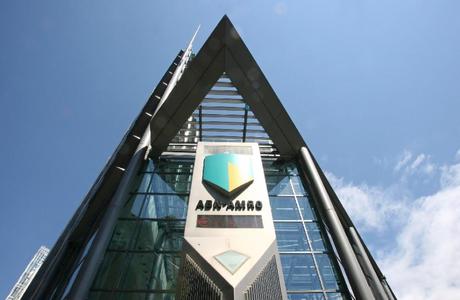ABN Amro Eyes Record-Breaking Return to Dutch Bourse

Seven years after being nationalized in a 2008 bailout, ABN Amro bounces back onto the stock market Friday in what is being billed as one of the biggest IPOs by a European lender since the financial crisis.
ABN Amro said it would offer 20 percent of its capital to investors in a first tranche.
The Dutch government, which led the bailout, is hoping to recoup some of the 22 billion euros spent propping up the bank in the tumult of the financial meltdown.
Initially, the price per share had been fixed at between 16 to 20 euros.
But ABN Amro said in a statement early Friday that the price had now been set at 17.75 euros a share.
That would raise some 3.3 billion euros ($3.5 billion), the bank said in a joint statement with the state administrators of the offering.
They confirmed that a further 3.0 percent share was available and "can be exercised to cover over-allotments or short positions" if there is a high demand.
Joost Vespers, analyst from the Dutch bank Theodoor Gilissen, told Agence France Presse everyone thought the initial price range had been "too wide".
"I think this is going to be the biggest entry onto the stock market ever in the Netherlands," he added.
To avoid all the shares being snapped up by major investment funds and other institutional investors, ABN Amro held back 10 percent for individual buyers in the Netherlands.
Although the government has said the bailout cost around 22 billion euros, its main audit body estimated the true price tag at about 32 billion euros, Dutch media has reported.
The bank's shares will be floated once more on the Dutch bourse, the AEX, from 0800 GMT.
"I don't think there will be any great movement up or down," said Vespers.
"ABN Amro is seen as a little boring, with no great possibility for long-term growth."
The Netherlands' third-largest bank behind ING and Rabobank, ABN Amro traces its roots back to the 19th century.
It was listed on the Amsterdam stock exchange before being bought in 2007 by a consortium consisting of Spanish lender Santander, the Royal Bank of Scotland and the Belgian-Dutch outfit Fortis.
But the 71 billion-euro-deal, one of the largest in banking history, proved calamitous for the three buyers.
Royal Bank of Scotland is now 73 percent owned by the British government after a £45.5 billion ($71 billion, 53 billion euro) rescue in 2008.
Fortis was also dismantled during 2008 to avoid bankruptcy.
Its Dutch activities, including its share in ABN Amro, were bailed out by the Dutch government, which then merged it back into ABN Amro Bank, and it has held the reins ever since.
Today ABN Amro is largely a commercial bank focusing significantly on the highly competitive mortgage market.
Last week it trumpeted continuing good results, enjoying net profits of some 509 million euros for the third quarter, a 33 percent year-on-year increase.



